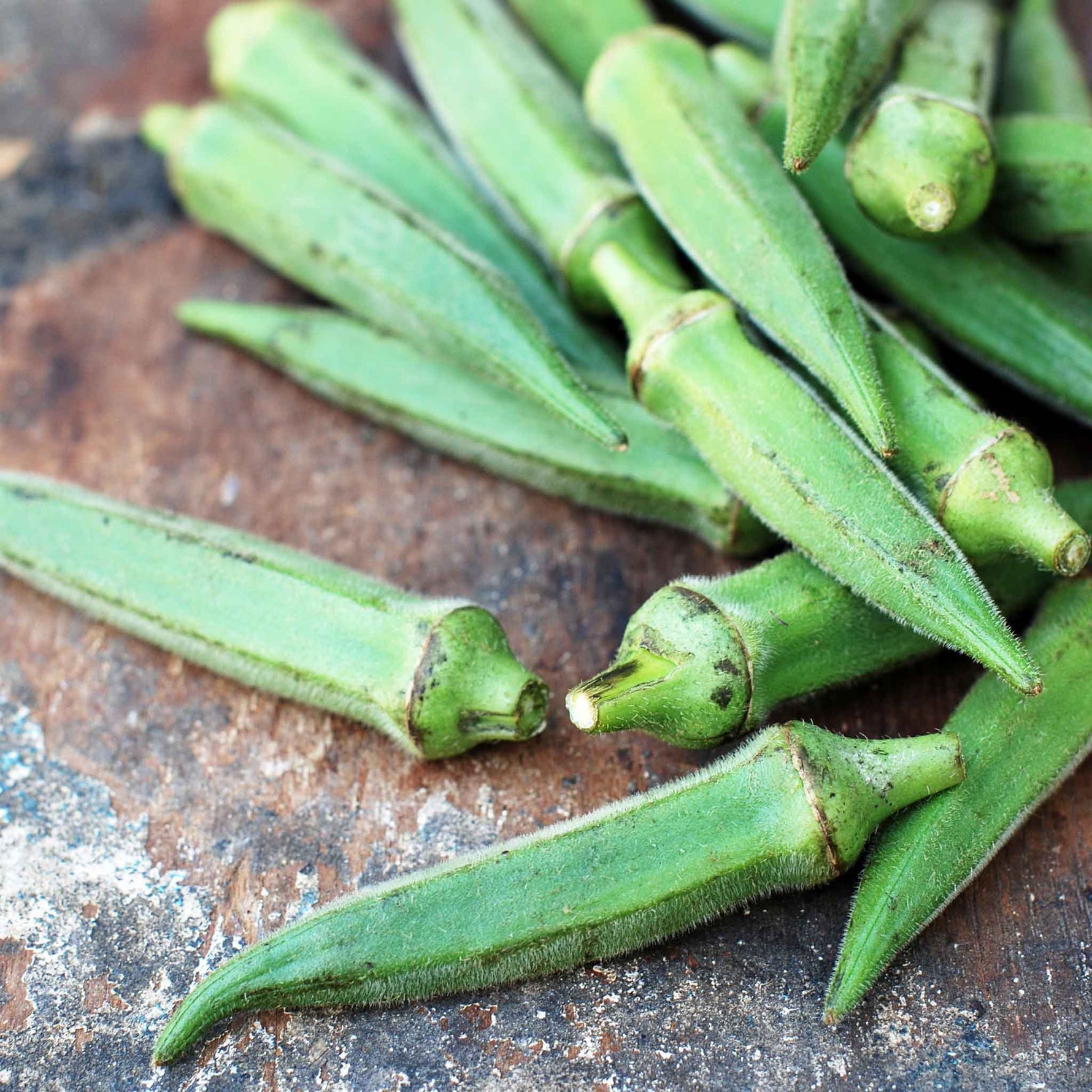
Dharaseeds
Okra Seeds - Emerald
Estimated Free Delivery between April 16 and April 19.
Secured Payment Methods
Your transaction is protected with advanced security measures to keep your information confidential
Emerald okra is a high-yielding variety known for its tender, dark green pods and exceptional flavor. This versatile variety is prized for its smooth, spineless pods that are easy to harvest and enjoy in various dishes. Emerald okra grows well in both home gardens and commercial settings, making it a popular choice for gardeners and farmers alike. Its mild, slightly grassy flavor and tender texture make it perfect for sautéing, frying, or adding to soups and stews.
Key Benefits
- Spineless Pods: Emerald okra has smooth, spineless pods that are easy to harvest without the usual prickles.
- High Yield: This variety produces abundant pods, ensuring a bountiful harvest throughout the growing season.
- Tender and Mild Flavor: The young pods have a tender, crisp texture and a mild flavor, perfect for various culinary uses.
- Heat-Tolerant: Ideal for hot climates, Emerald okra thrives in high temperatures, making it a great option for summer gardening.
- Disease Resistant: Emerald okra is resistant to many common okra diseases, including root rot and fusarium wilt, ensuring a healthier crop.
Variety Features
- Plant Characteristics: Emerald okra plants are tall and robust, with large, deep green leaves. They can grow up to 6 feet tall, producing an abundance of pods.
- Fruit Characteristics: The pods are smooth, dark green, and typically grow 3–5 inches long. They are tender when harvested early and have a smooth texture.
- Flavor Profile: Mild and slightly grassy, with a delicate flavor that softens when cooked, making it a versatile ingredient in various dishes.
- Size: Plants can grow 4–6 feet tall, and the pods reach 3–5 inches in length when mature.
Planting Instructions
Planting Season
- Planting Time: Start seeds after the last frost has passed when the soil is consistently warm, typically in late spring or early summer.
- Ideal Temperature: Okra thrives in temperatures between 75°F–95°F (24°C–35°C). It needs warm soil to germinate and grow.
Planting Details
- Seed Depth: Plant seeds about 1 inch deep.
- Spacing: Space plants 12–18 inches apart, with rows spaced 36–48 inches apart to allow ample space for growth.
- Soil Requirements: Prefers well-drained, fertile loamy soil with a pH of 6.0–6.8. Soil should be rich in organic matter to support strong growth.
- Sunlight: Requires full sun to grow successfully and produce a high yield of pods.
Care Instructions
Watering
- Consistent Moisture: Okra needs consistent moisture to thrive, especially during pod production. Keep the soil moist but not waterlogged.
- Deep Watering: Water deeply at the base of the plants to encourage strong root growth, but avoid wetting the foliage to prevent fungal issues.
Fertilization
- Balanced Fertilizer: Apply a balanced fertilizer (e.g., 10-10-10) at planting time and again when the plants are about 6 inches tall to support optimal growth.
- Side-Dressing: Consider side-dressing with compost or additional fertilizer midway through the growing season to promote healthy pod production.
Weeding and Mulching
- Weeding: Regularly weed around the plants, being careful not to disturb the shallow roots.
- Mulching: Apply mulch around the base of the plants to retain moisture, suppress weeds, and keep the soil cool.
Pest and Disease Control
- Pests: Watch out for aphids, grasshoppers, and flea beetles, which can damage okra plants. Use organic pest control methods like neem oil or insecticidal soap if necessary.
- Diseases: Emerald okra is resistant to many diseases, but fungal infections like powdery mildew can still occur in humid environments. Ensure good air circulation and avoid overhead watering.
Harvesting
- Maturity: Emerald okra typically reaches maturity in 50–60 days after planting.
- Harvest Size: Harvest the pods when they are 3–4 inches long and still tender. Pods left too long on the plant can become tough and fibrous.
- Method: Gently twist or cut the pods from the plant using scissors or pruning shears. Harvest every 2–3 days to encourage continued pod production.
Storage
- Short-Term: Fresh okra can be stored in the refrigerator for up to 5 days. Place the pods in a perforated plastic bag to maintain air circulation.
- Long-Term: Okra can be blanched and frozen for long-term storage. To freeze, blanch the pods in boiling water for 2–3 minutes, then cool and freeze.
Culinary Uses
- Fried: Coat the pods in cornmeal or breadcrumbs and fry them for a crispy treat.
- Soups and Stews: Add Emerald okra to soups and stews to thicken the broth and provide flavor and texture.
- Grilled or Sautéed: Grill or sauté the pods with olive oil, garlic, and herbs for a simple, flavorful side dish.
- Pickled: Pickle okra for a tangy snack or appetizer, perfect for Southern-inspired dishes.
Conclusion
Emerald okra is an excellent choice for gardeners looking for a high-yielding, easy-to-harvest variety that produces tender, flavorful pods. With its spineless nature, disease resistance, and heat tolerance, it’s perfect for growing in warm climates. Whether you’re using it in gumbo, frying it, or adding it to soups, Emerald okra is sure to impress with its mild flavor and versatile culinary uses.









